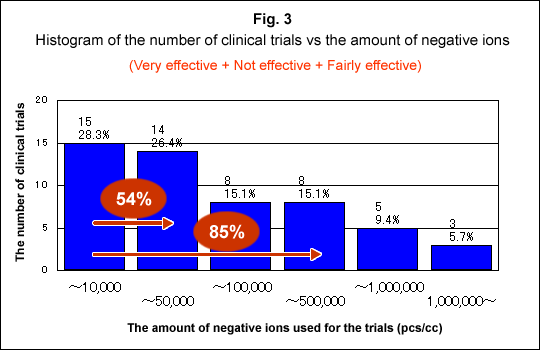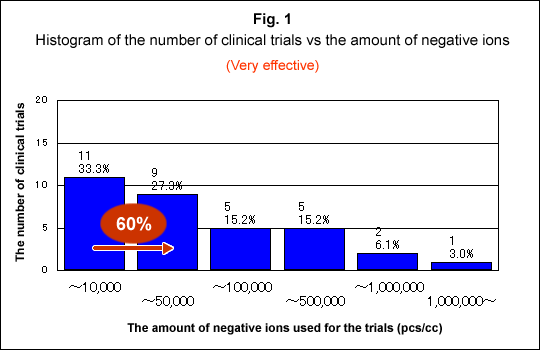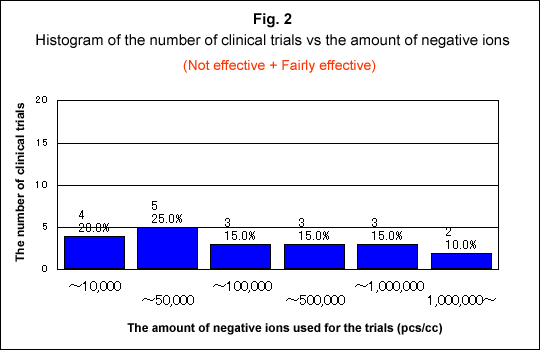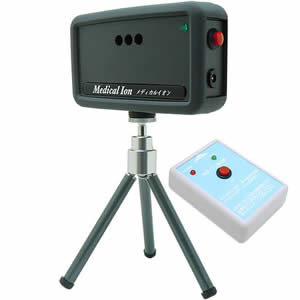Ideal amount of negative ions |
 |
 |
 We investigated the ideal amount of negative ions.
Contents
References
 Purpose of investigation
We investigated the ideal amount of negative ions based on clinical data found in medical literature.
It is said that negative ions have beneficial effects on health but you may be wondering what the ideal amount is. Some advice you to take xxx pcs/cc, while others suggest yyy pcs/cc. There are many factors which influence the ideal amount because it can depend on the person and symptoms. It can also vary depending on how negative ions are generated, the ratio of negative/positive ions and measurement tolerances.  Conclusion
Fig. 3 is a histogram of the number of clinical trials vs the amount of negative ions.
Based on this data, we suppose:
   Notes
You need to be aware of the following issues to determine the ideal amount because it can be affected by them.
 Data collection and review
These 3 histograms show the data we collected.
 1. Very effective  2. Not effective + Fairly effective  3. Very effective + Not effective + Fairly effective (1+2)   Summary
We suppose that the ideal amount of negative ions falls between 1,000-500,000 (pcs/cc), which is much wider than we presumed.
We only had 53 samples of clinical trials on humans. We could have collected more data if trials on animals, internal organs and cells had been included. However, we are happy because we have found that approx. 54% of the clinical trials were conducted in the range of up to 50,000 (pcs/cc). The histogram shows that only approx. 5% of the clinical trials were conducted in the range of over 1,000,000 (pcs/cc). However, it is possible that the actual amounts of negative ions the patients absorbed were below 1,000,000 (pcs/cc) because we are not sure if the ion counts were measured at the blow off point of the negative ion generator or not. Effects on the human body are said to vary depending on the length of the exposure time. We are sure that we can obtain a more precise figure if we take this factor into account.
|
 |
||||||||||||||||
 |
||||||||||||||||||

|
|
 |
 |

|
Ion Trading
Universal Plan Co., Ltd.
107 Tachikawa-Lumiere, 3-5-1, Ichiban-cho, Tachikawa-city, Tokyo, 190-0033, Japan
Phone: +81-42-848-5311 Fax: +81-42-848-5148
|
| Copyright (C) Universal Plan Co., Ltd. 1993-2024 Japanese Corporate Number: 1012802002452 (National Tax Agency Japan) |




